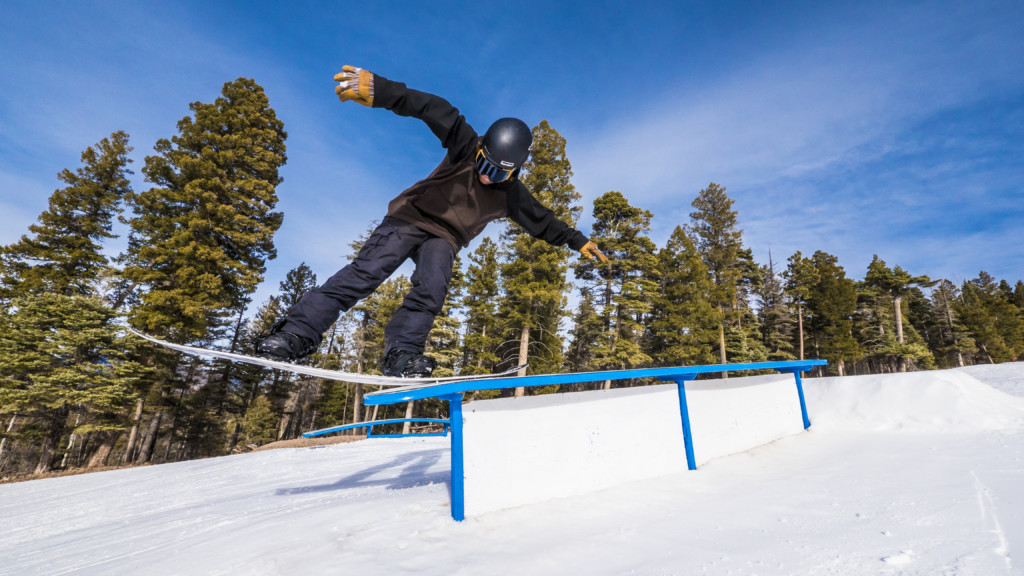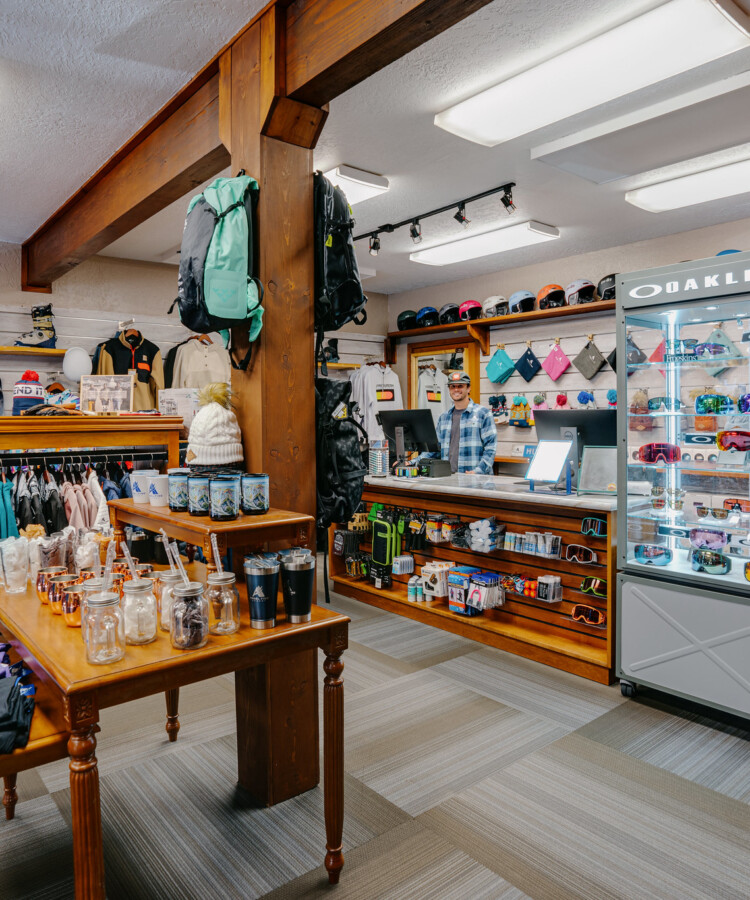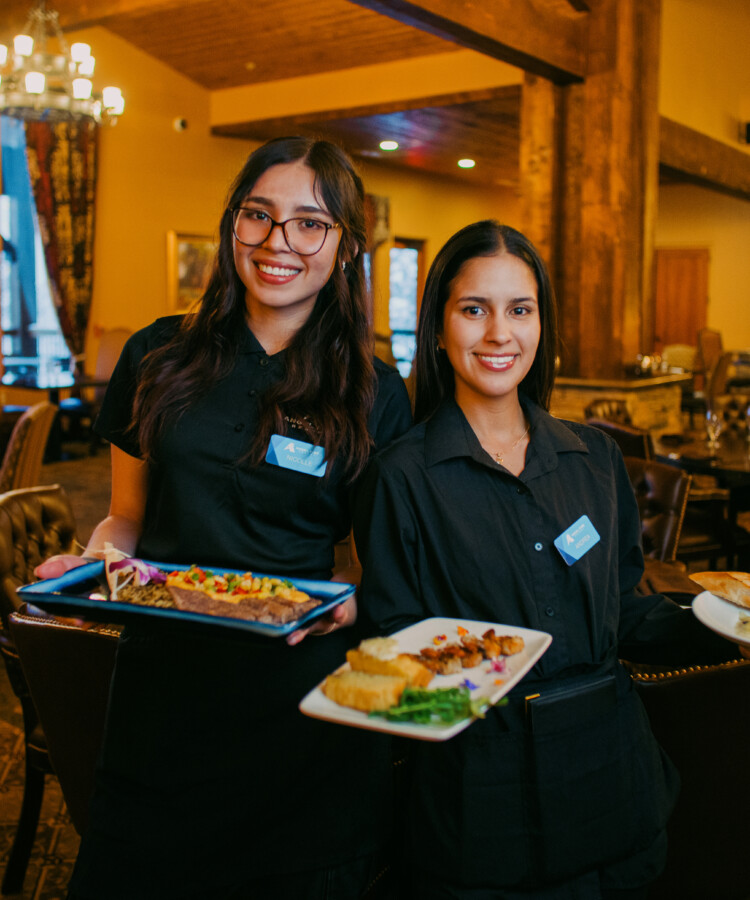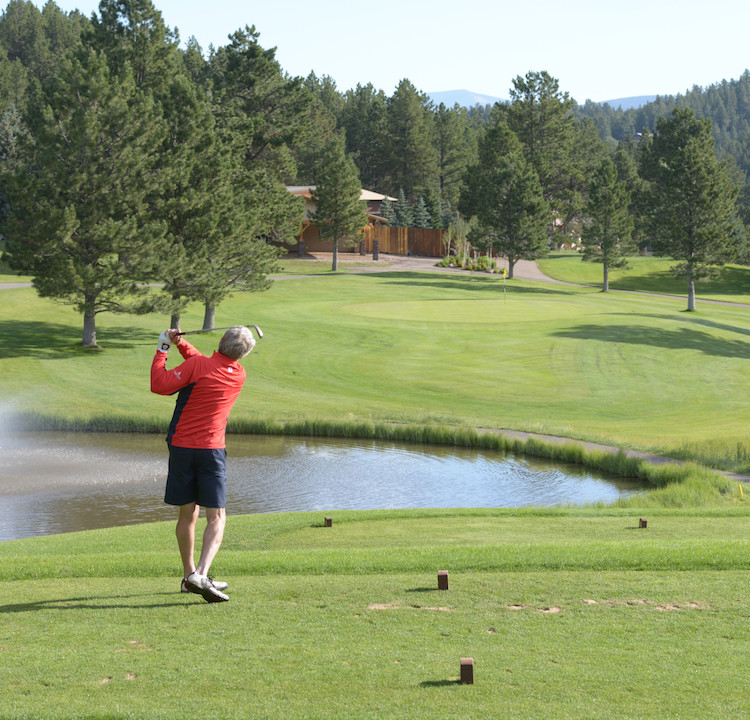

Skiing has been a big part of the active lifestyles in the United States since the 1920s, and snowboarding has only grown more popular since taking the country by storm in the 1980s. That means competitors and hobbyists alike have had decades to come up with their own way to talk about what they do — and how much they love doing it.
But this slang isn’t only slung around by hardcore winter sports fans. Beginners and casual skiers alike can benefit from building up their vocabulary. Suddenly, you’ll find it easier to interpret mountain signage, choose the proper gear, apply your instructor’s lessons, and share memories with family and friends. 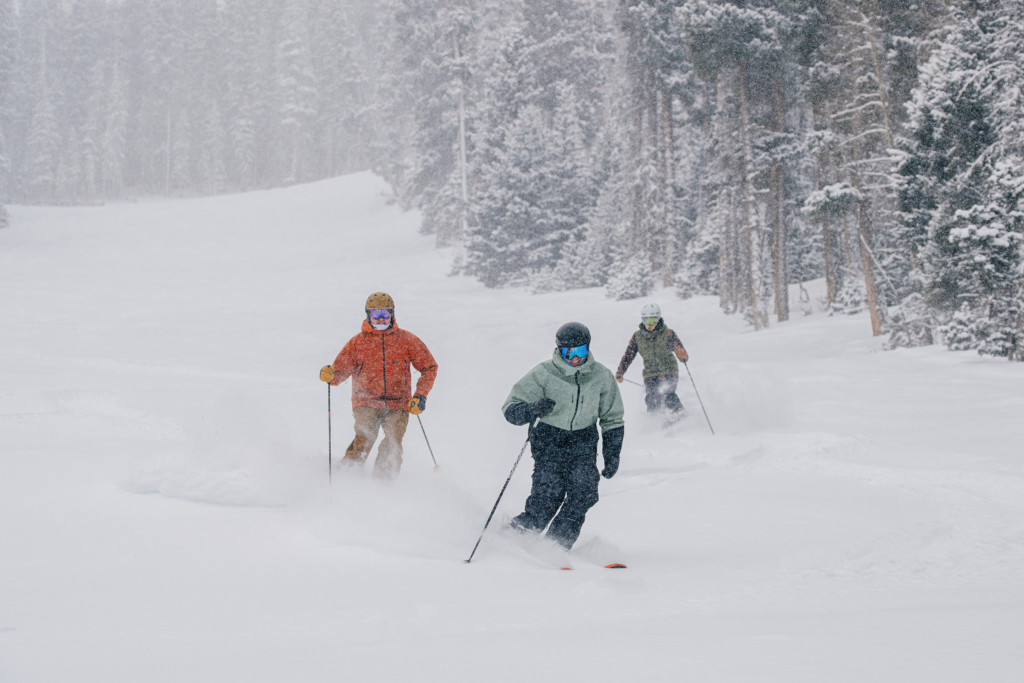
So, are you ready to rip? The skiing and snowboard experts here at Angel Fire Resort have compiled a list of the words you’ll want to know before making your next run.
Ski Lingo ABCs
There will not be a quiz at the end of this exercise. But here are a few terms you want to memorize (or scribble on a cheat sheet).
Après-Ski. French for “after ski.” Any get-together, usually involving food and drink, at the end of a day on the mountain. But we’re getting ahead of ourselves!
Bluebird. A beautiful day on the mountain marked by cloudless, brilliantly blue skies. (It may be sunny, but it’s still plenty cold.) Often, a bluebird follows an overnight snowstorm, including storms that have produced dumps (see below).
Booter. If you hit a jump that lets you enjoy a lot of air time, you’ve hit a booter. Some skiers call these jumps kickers.
Carve. To use the outside edges of your skis or board to make a tight, clean turn, leaving adistinctively curved line in the snow.
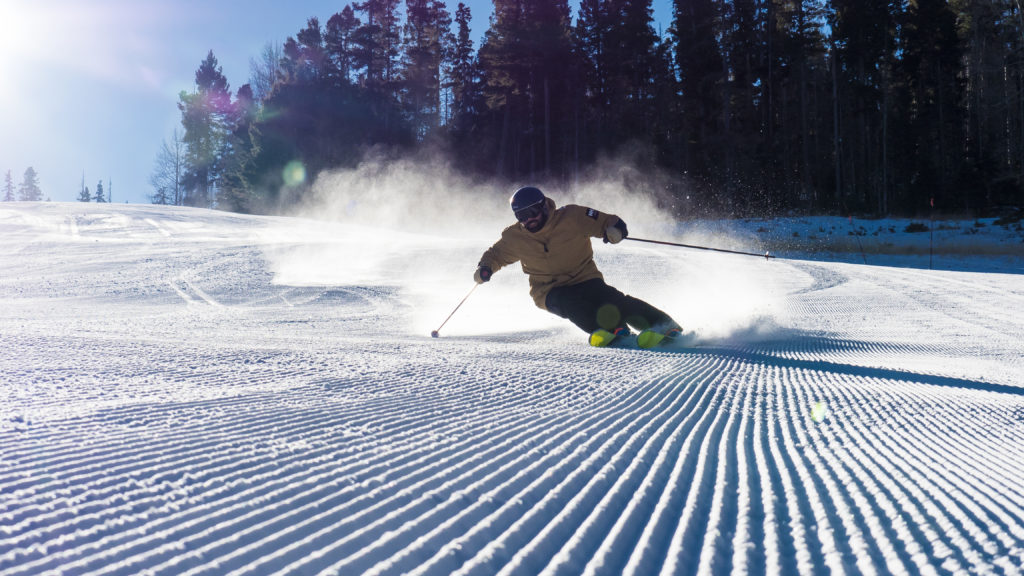
Corduroy. A machine- (or snowcat-) groomed slope, one where the snow has been evened out to provide a smoother ride.
Crud. Cut-up snow — that is, snow that has been already skied to a certain extent — that hasn’t been groomed yet. Crud can be fun to ski at first, especially if it’s been covered by fresh snowfall. But, true to its name, crud will become heavier and harder to navigate as temperatures rise and the sun bakes the surface. Also, unlike corduroy, crud can hold some surprises, especially for less experienced skiers.
Dump. Often preceded by “big” or “huge,” a dump is an impressive amount of snowfall.
Faceshot. Sometimes, when the powder (see below) is so deep and so fluffy, you can kick up so much of it on your ride that it ends up intermittently obscuring your view. The snow doesn’t necessarily have to stick to your goggles for it to qualify as a faceshot — but experienced skiers get stoked (see below) when it does!
Fall Line. The most direct path down a hill or mountain.
Flat Light. When overcast skies, fog, or snowfall block out the sunlight, reducing visibility.
Freestyle. An approach to skiing that’s all about tricks, jumps, tricks, and airborne maneuvers. By contrast, traditional downhill skiing is known as Alpine skiing.
Freshies. New snow that no one has laid tracks across yet. Maybe you’ll be the first?
Gnar. The more time you spend on the mountain, the more likely you are to hear a fellow skier or snowboarder utter the word “gnar.” However, gnar has several meanings and just as many applications.
At one level, gnar is an expression of admiration. Gnar — short for gnarly — is a move, trick, or feat that presents a steep challenge that’s also incredibly rewarding to pull off.
Gnar can be audacious, silly, or even a little obnoxious, like doing a 360 while screaming “YOLO!” at the top of your lungs. The word can have a purely negative connotation, too. A gnarly ride can be as frightening as it is fun. It all depends on the mountain, the conditions, and how adventurous you feel.
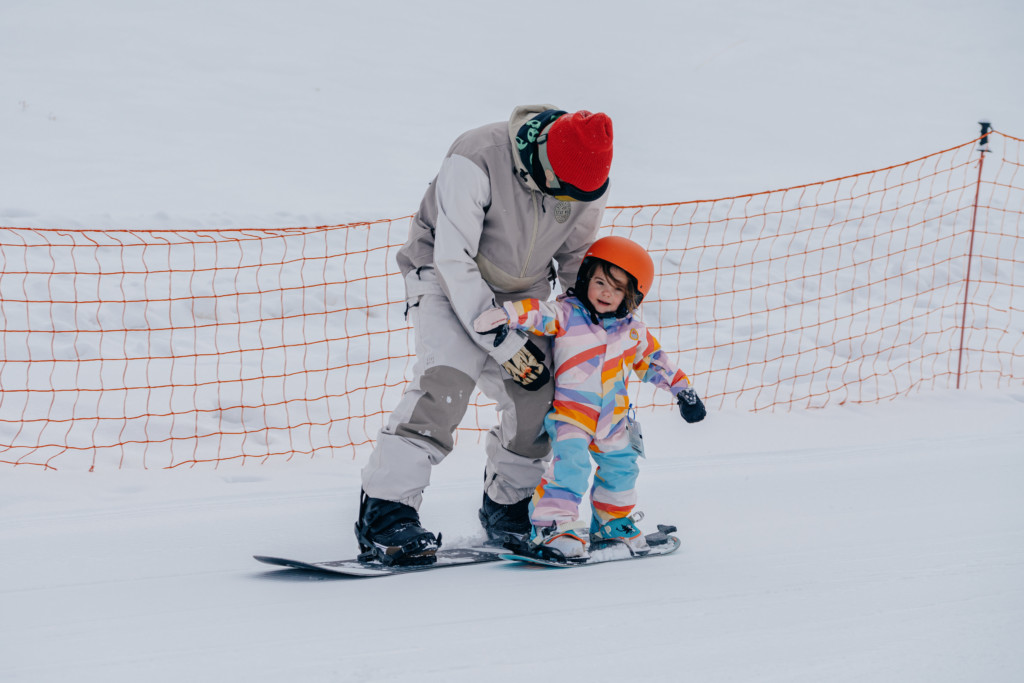 Little Ripper. A child (generally 12 or younger) who skis and/or boards with exceptional skill. Another name for a little ripper is grommet.
Little Ripper. A child (generally 12 or younger) who skis and/or boards with exceptional skill. Another name for a little ripper is grommet.
Moguls. Whether formed naturally or purposefully, these are bumps in the snow you can turn around as you ride.
Piste. The designated path to ride down a mountain. Often also referred to as a slope or trail. If you’re sticking to a groomed trail, you’re staying on-piste. If you’re striking out toward an ungroomed trail, you’re going off-piste.
Pizza. To slow down by pointing your toes inward, making a wedge shape in which the tips of your skis are closer together than their tails.
New skiers frequently employ this basic turning technique, and some instructors will refer to it as snowplowing.
The opposite of the pizza? French fries — that is, skiing with your skis parallel to each other.
Powder. Also known as pow or pow-pow, this is the loose, dry — thus powdery — snow that rippers’ dreams are made of.
Rip. To ski like a pro. To show great talent or skill while riding. In other words, a fast run does not necessarily qualify as a rip. If your speed run threatens to veer out of control at any moment, you might be more of a bomber.
Shred. The snowboarding equivalent to ripping.
Schuss. Also known as a schussboom. To speed down the mountain in a straight line, without turning or jumping.
Stash. A patch of snow undiscovered by any other skier. You’ll often find these hidden gems off-piste in glades: skiable areas mostly shaded by trees.
Steez. Sometimes spelled “steeze” or even “steaze,” this is a portmanteau word combining “style” and “ease.” To be steezy is to pull off an impressive move or trick with apparent effortlessness.
Stoked. To be excited.
Stomp. To totally nail the landing of a trick.
Tracked Out. When powder loses its power after being packed down from repeated runs.
Traverse. In skiing, traverse means something more specific than “travel.” It refers to moving across and down a hill at a 90-degree angle relative to its slope (or gradient). Because traversing involves so much horizontal movement — especially on steeper slopes — it tends to leave a zigzag pattern in the snow.
Two Minus One. You’re ready to announce that you’re taking your last ride of the day. It’s considered bad luck (not to mention poor form) to say “one more” or “last call.” For self-preservation purposes, it’s best to use this phrase instead.
Yard Sale. A spectacularly epic fall that results in the skier losing all their gear in the tumble, leaving skis, poles, goggles, gloves, etc., scattered up and down the mountain.
Of course, you don’t need to talk the talk to enjoy your time at our family-friendly Alpine playground. We welcome skiers and snowboarders of all skill levels. We also offer activities for every member of your party, no matter what interests them or how they express a sense of adventure.
So come discover why generations of winter vacationers have flocked to Angel Fire Resort. Book now to experience the best snow in New Mexico before our Winter Season ends on March 20th!
